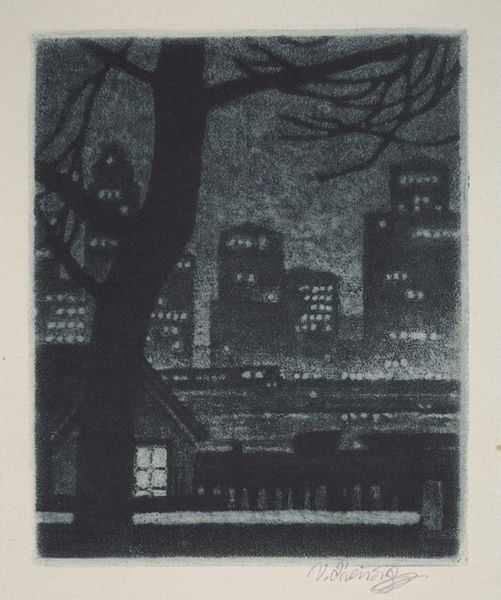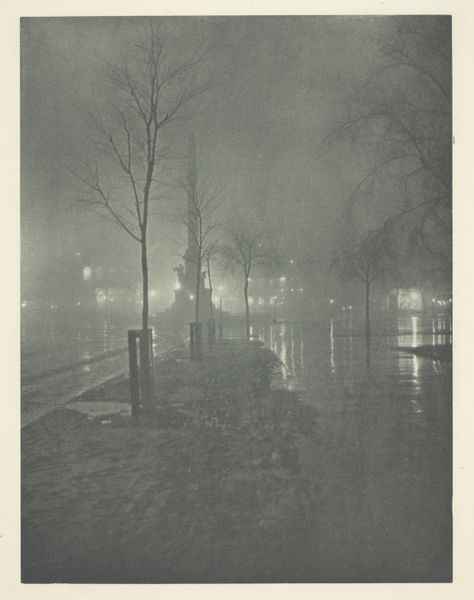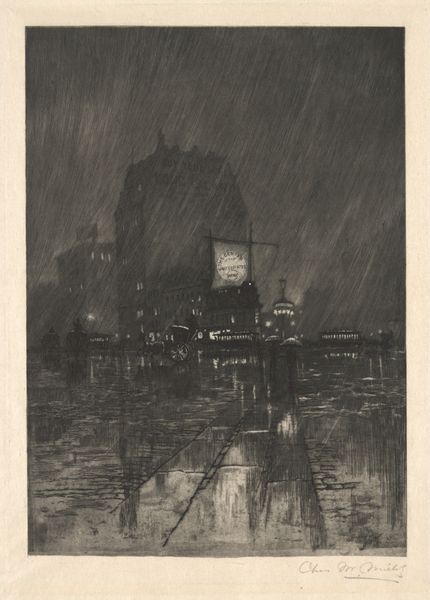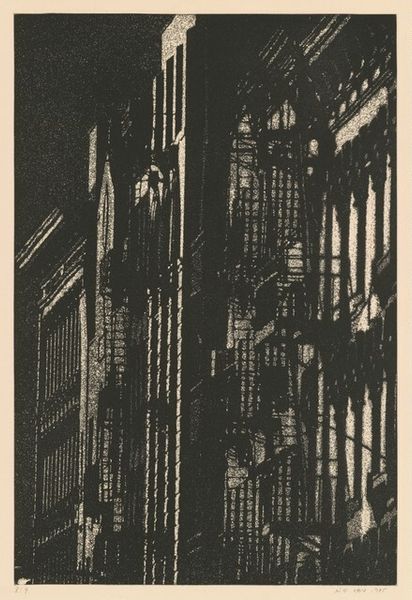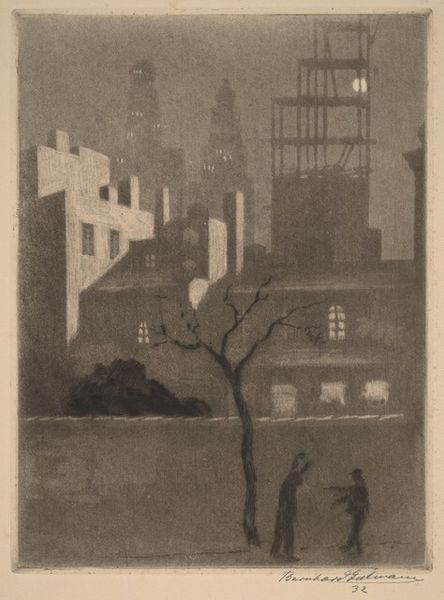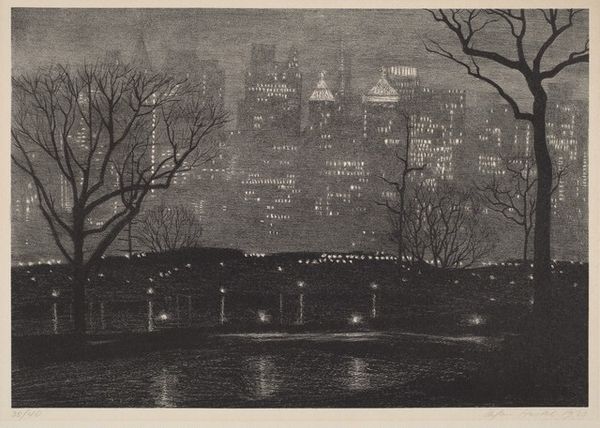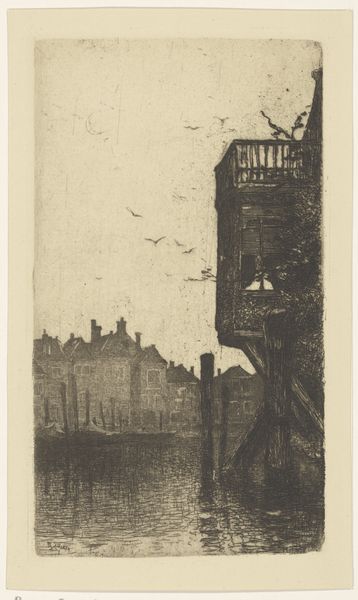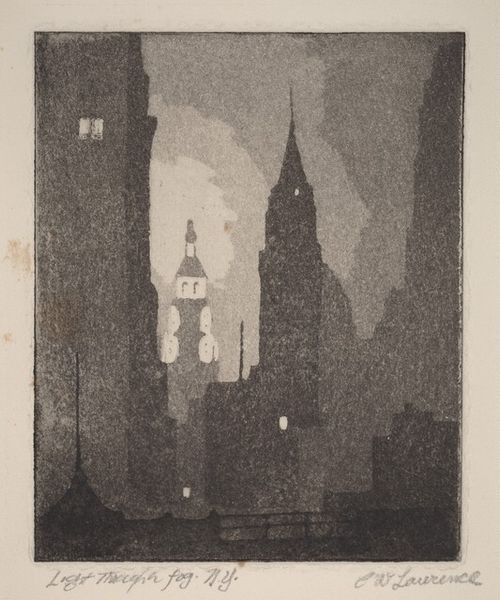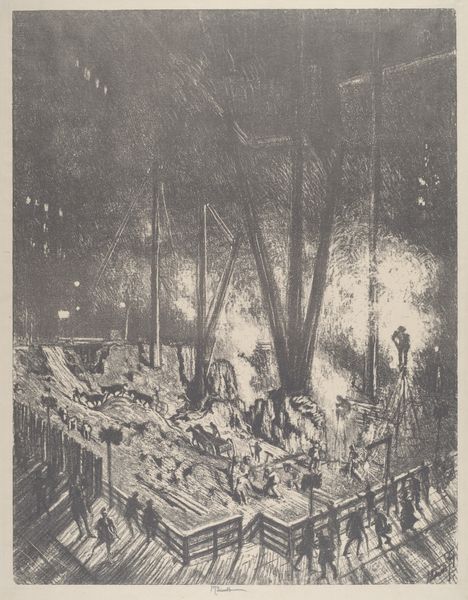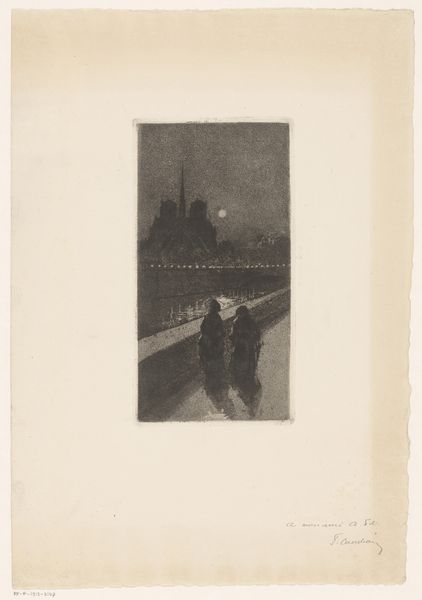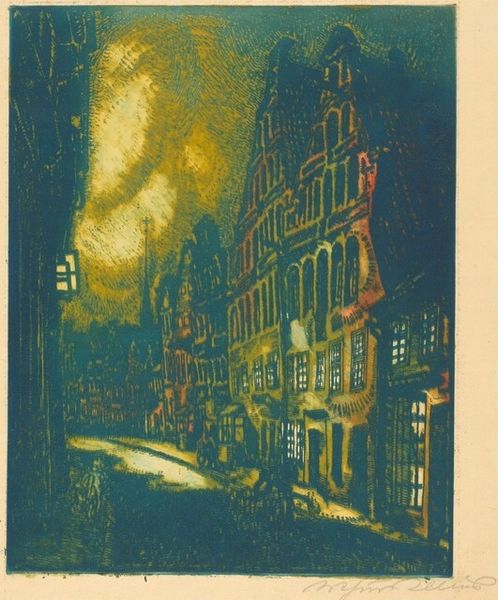
Dimensions: image: 35.4 × 20 cm (13 15/16 × 7 7/8 in.) sheet: 50.8 × 33.34 cm (20 × 13 1/8 in.)
Copyright: National Gallery of Art: CC0 1.0
Editor: Here we have Beatrice Levy’s “Rainy Night,” an etching from 1914. The overall mood is somber, almost haunting, with these silhouetted figures under umbrellas and stark bare trees. What symbolic layers do you see in this piece? Curator: That somber feeling resonates deeply. Consider the umbrella, a shield against the storm, a protector. Its presence here highlights vulnerability, doesn’t it? A shared space huddled under one roof, a cultural desire to be close with loved ones. Think too of the stark trees, leafless, almost skeletal. In many cultures, the bare tree signifies winter, a period of dormancy or even a confrontation with mortality. This juxtaposition of shelter and exposure creates tension. Editor: That's fascinating. So the imagery speaks to broader themes of protection and vulnerability? How does the cityscape itself play into this? Curator: Precisely. The city, with its buildings looming in the darkness, also functions as shelter. What happens to our psychology as these buildings become darker or more intimidating? Here the building's dark presence also emphasizes an element of entrapment, a modern angst for what is lurking behind its darkened façade. Notice the light. What could those golden embers symbolize, given their limited amount of warmth? Does the glow of those interior lights act as beacon, or does it serve as another painful reminder of one's place within a cold, industrial age? Editor: So the image acts as both mirror and metaphor. A commentary on human condition in urban modernity, viewed through the lens of universal symbols of life, death and protection. I wouldn’t have picked up on such rich cultural meanings on my own. Curator: Visual art offers an endless opportunity for decoding cultural context.
Comments
No comments
Be the first to comment and join the conversation on the ultimate creative platform.
